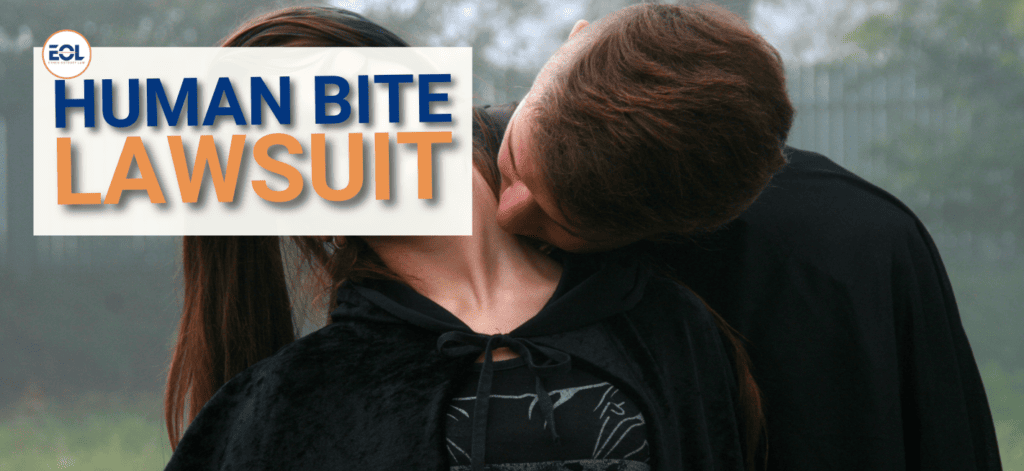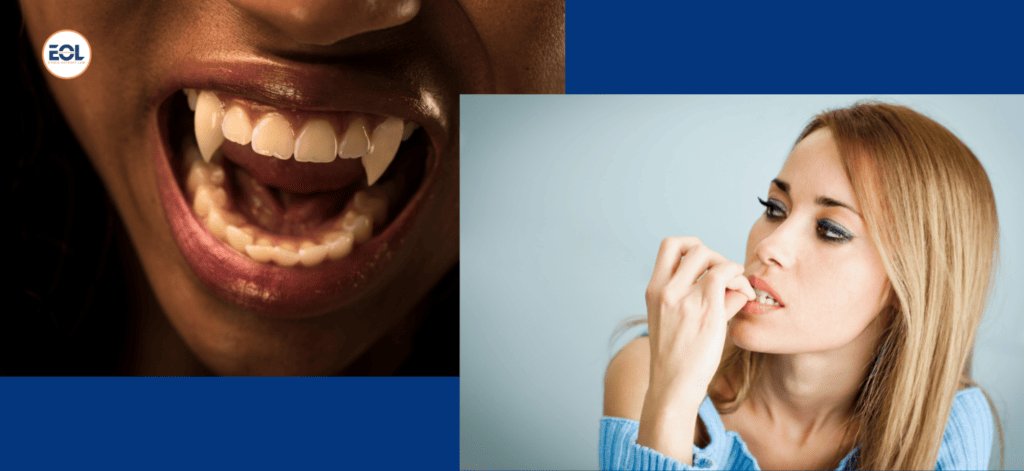Human Bite Lawsuit Decoded: A Comprehensive Compensation Guide
In personal injury cases, few incidents carry the unique complexities of human bites. A seemingly minor event can result in serious consequences, both physically and legally. As you navigate the repercussions of a human bite lawsuit, understanding the legal landscape becomes paramount. In this guide, we delve into the nuances of human bite lawsuits, exploring the risks, treatment, and pivotal role Ethen Ostroff Law plays in securing justice and compensation for those affected. Join us on a journey through the intricacies of human bite lawsuits, where knowledge becomes your most potent ally.
Human Bites: How Common Are They?
Human bites are estimated to be 250,000 per year in the United States, with up to 25% of them resulting in infection. They account for about 3% of all bite injuries treated in emergency rooms. Accurately estimating their frequency is challenging as many go unreported, but infections from human bites are more extensive than initially thought, affecting 10%–15% of cases. Infection rates vary, ranging from 4% for facial injuries to 50% for hand bites.
Human bites can happen if someone intentionally bites or if your hand accidentally contacts a person’s teeth, such as during a fistfight. Children frequently engage in biting to express negative emotions, and males between 10 and 34 years old are more often victims. Recent studies indicate that approximately 10% of all reported bites are of human origin, occurring in various settings, from workplace altercations to domestic disputes.
Risks Associated with Human Bites
Despite being less common than animal bites, human bites pose significant risks. The oral cavity houses diverse bacteria, and a human bite can introduce these into the victim’s bloodstream, leading to infections. Commonly resulting in puncture wounds and tissue damage, complications can escalate if not promptly addressed.

Common Bacteria Found in Human Bites
When someone bites you, it introduces different bacteria into your body. Common bacteria from human bites include:
- Anaerobes: Thriving in low-oxygen environments, these bacteria, like Bacteroides and Peptostreptococcus, may be introduced when bites penetrate deep tissues.
- Eikenella corrodens: Often linked to human bites, this bacterium can cause infections requiring medical attention.
- Pasteurella multocida: Commonly found in the mouths of dogs and cats, this bacterium can also be transmitted through human bites, leading to infections and complications.
- Staphylococcus: A common oral bacterium, Staphylococcus can cause skin and soft tissue infections, posing a risk when transmitted through human bites.
- Streptococcus: Common in the human mouth, Streptococcus can cause infections if introduced into wounds through a bite.
Common Complications of Human Bite Infections
Human bite infections, if not addressed properly, can result in various complications that extend beyond the initial wound. Some common complications include:
- Abscess formation: In response to infection, abscesses form around the bite, leading to swelling and pain. Neglecting treatment can necessitate drainage and increase the risk of systemic infections.
- Cellulitis: Untreated human bite infections cause cellulitis, characterized by redness, swelling, and tenderness. If left untreated, it spreads, requiring immediate medical attention to prevent severe infections.
- Osteomyelitis: Bacteria from a human bite led to osteomyelitis, causing persistent pain, swelling, and limited movement. Severe cases may result in significant bone damage, requiring prolonged antibiotic treatment.
- Scarring and disfigurement: Healing from a human bite result in visible scarring and potential disfigurement, with lasting implications. Psychological support and proper wound care are crucial for individuals facing such changes.
- Septic arthritis: Arising from bacteria entering joints through a bite, septic arthritis triggers inflammation, joint pain, and swelling. Timely intervention is essential to prevent long-term joint damage.
- Systemic infections: Bacteria entering the bloodstream from a human bite cause systemic infections, manifesting as fever, chills, rapid heartbeat, and confusion. Urgent medical attention is critical to prevent life-threatening consequences.
Risk Factors for Developing an Infection from a Human Bite
Developing an infection from a human bite is influenced by several risk factors that increase the chances of bacterial transmission and subsequent infection. Here are key risk factors:
- Bite in a healthcare setting: Bites in healthcare settings may involve antibiotic-resistant bacteria, elevating the risk of challenging infections.
- Bite involving the hand: Hand bites are prone to infection due to the high bacteria density on the skin and the complex hand structure facilitating bacterial entry.
- Delay in cleaning and treatment: Postponing wound cleaning or medical attention extends exposure to potential pathogens, increasing the risk of bacterial growth.
- Depth and severity of the bite: Deeper and more severe bites, especially punctures, raise the risk of introducing bacteria deeper into tissues, heightening the infection likelihood.
- Immunocompromised state: Weakened immune systems, as in chronic illnesses or immunosuppressive treatments, increase susceptibility to infections from human bites.
- Inadequate wound care: Insufficient wound care raises infection risk; thorough cleaning and proper dressing are crucial to minimize this risk.
- Infection from human oral flora: Human mouths harbor diverse bacteria introduced through bites, elevating infection risk. Specific bacteria can vary based on oral hygiene.
- Location of the bite: Bites on joints or areas with a rich blood supply may be more susceptible to infections as bacteria can spread easily.
- The presence of foreign objects: Introducing foreign objects into the wound, if not promptly addressed, serves as a potential source of infection.
- Presence of pre-existing infections: Existing infections in the oral cavity or on the skin of either the biter or the person bitten heighten the risk of bacterial transmission.
- Unknown immunization status: Outdated tetanus vaccinations increase the risk of tetanus infection, especially with skin-breaking bites.

Who Is at a Higher Risk of Infection Following a Human Bite?
Certain individuals face a higher risk of infection after a human bite, influenced by various factors. Here are the groups more susceptible:
- Elderly individuals: Older individuals with weakened immune systems and decreased skin integrity are more susceptible to infections from human bites.
- Immunocompromised individuals: Those with compromised immune systems (HIV/AIDS, autoimmune diseases, or undergoing immunosuppressive treatments) face a heightened risk, making it challenging to combat bacterial infections.
- Individuals with chronic illnesses: Those with chronic illnesses, like liver or kidney disease, may have compromised immune function, increasing their vulnerability to infections.
- Individuals with diabetes: Diabetes compromises the immune system, elevating the risk of infection following a human bite.
- Individuals with poorly controlled chronic conditions: Poorly managed conditions, like hypertension or rheumatoid arthritis, contribute to a weakened immune response, increasing infection risk.
- Individuals with previous infections or scarring: Those with a history of frequent infections or scarring have compromised tissue integrity, leading to an increased risk of infection.
- Patients undergoing cancer treatment: Individuals in cancer treatment may experience immunosuppression, heightening vulnerability to infections from human bites.
- Patients with peripheral vascular disease: Peripheral vascular disease compromises blood flow, hindering the body’s natural defense mechanisms and increasing susceptibility to infections.
- People taking immunosuppressive medications: Individuals on medications that suppress the immune system, such as corticosteroids, are at an elevated risk, reducing the body’s ability to fight off bacterial invaders.
- People with chronic skin conditions: Those with chronic skin conditions, like eczema or psoriasis, may have compromised skin barriers, making it easier for bacteria to cause infections.
- People with circulatory disorders: Conditions affecting blood circulation, like peripheral artery disease, impede immune cell delivery, increasing the risk of infection.
- Persons with malnutrition: Malnutrition impairs the body’s ability to heal and fight off infections, increasing the risk of complications from human bites.
Mitigating Infection Risks from Human Bites
Human bites, though commonly underestimated, pose infection risks that demand attention. Taking proactive steps to prevent infections is crucial for a swift and complication-free recovery. Here are practical measures and precautions to minimize infection risks from human bites:
- Immediate cleaning: Act quickly to prevent infections. Clean the bite promptly with mild soap and warm water to remove bacteria, actively minimizing potential complications.
- Antibiotic ointment: Apply an over-the-counter antibiotic ointment after cleaning. It acts as a shield, fortifying defenses and promoting a cleaner healing process.
- Use of sterile dressings: After applying antibiotic ointment, cover the wound with a sterile dressing. This proactive measure prevents contaminants, creating an optimal healing environment and minimizing infection risks.
- Elevation and immobilization: Elevate and immobilize the affected limb, if applicable. This practical step reduces strain, promoting faster healing in the early post-bite stages.
- Professional medical attention: Promptly consult a healthcare professional, especially for deep wounds. Timely evaluation ensures proper interventions tailored to minimize infection risks, contributing significantly to a smoother recovery.
- X-ray evaluation: For puncture wounds, consider an X-ray to identify hidden complications. This strategic step prevents subsequent infections and aids overall recovery.
- Course of antibiotics: Follow the prescribed antibiotics diligently. This is crucial for eradicating bacteria, preventing resistant strains, and actively contributing to a thorough recovery.
- Monitoring for infection: Vigilantly watch the bite site for signs of infection. This proactive approach allows for early detection, preventing progression, and ensuring a smoother recovery.
- Tetanus vaccination: Ensure up-to-date tetanus vaccinations, especially for deep wounds. This proactive measure adds an extra layer of protection for a more resilient recovery.
- Psychological support: Seek psychological support and employ coping mechanisms to prevent stress-related complications and foster a holistic recovery.
Immediate Actions After a Human Bite
If you have experienced a human bite, taking swift and appropriate measures is vital to reducing infection risks and potential complications. Follow this step-by-step guide for an effective response:
- Clean the wound immediately: Wash the bite site with mild soap and warm water promptly. Thorough cleaning removes surface bacteria, diminishing the risk of infection.
- Apply an antiseptic: Post-cleaning, apply an antiseptic solution or hydrogen peroxide to disinfect the wound, minimizing the chance of bacterial growth.
- Control bleeding (if applicable): If the bite causes bleeding, gently apply pressure using a clean cloth or sterile bandage. Elevate the affected limb to manage bleeding effectively.
- Apply an antibiotic ointment: After cleaning and disinfecting, apply over-the-counter antibiotic ointment to create a protective barrier against bacterial growth.
- Cover the wound: Use a sterile dressing or bandage to cover the wound, preventing contaminants and fostering an optimal healing environment.
- Elevate the affected area (if applicable): For limb bites, elevate to reduce swelling and minimize movement, particularly for hand or foot bites.
- Seek medical attention: For deep bites, punctures, or signs of infection, such as redness or swelling, seek prompt medical assessment. Professionals can prescribe antibiotics and provide necessary wound care.
- Update the tetanus vaccination: Ensure tetanus vaccinations are current, especially for skin-breaking bites, preventing potential serious bacterial infections.
- Report the bite: If in a public setting or inflicted by someone else, consider reporting to authorities for legal or public health reasons.
- Watch for signs of infection: Monitor the bite site for signs like increasing redness, swelling, warmth, or pus. Seek medical attention promptly if these symptoms arise.
- Consider an X-ray (for puncture wounds): For puncture wounds or concerns about foreign objects, consult a healthcare professional for potential X-rays to identify hidden complications.
- Follow medical advice: If prescribed antibiotics, complete the full course as directed. Adhere to healthcare professionals’ instructions for comprehensive wound care and recovery.
Treatments for Human Bites: Prioritizing Healing and Infection Prevention
The treatment for human bites varies based on severity and infection risk. Explore the range of available treatments:
- Elevation and immobilization (if applicable): Elevate and immobilize a bitten limb to reduce swelling and expedite healing.
First aid and immediate care.
- Cleaning the wound: Wash with mild soap and warm water to eliminate bacteria, which is crucial for infection prevention.
- Control bleeding: Apply gentle pressure with a clean cloth or sterile bandage to manage any bleeding.
- Antiseptic application: Disinfect the wound using an antiseptic solution or hydrogen peroxide.
Follow medical advice.
- Prescribed antibiotics: Complete the full course as directed to prevent or treat bacterial infections.
- Follow-up care: Monitor for signs of infection, such as redness, swelling, warmth, or discharge.
- Medical evaluation and intervention: Seek medical attention for deep or puncture wounds, signs of infection, or concerns about foreign objects.
Over-the-counter medications.
- Pain relief: Use over-the-counter pain relievers like acetaminophen (Tylenol) or ibuprofen (Advil, Motrin) for pain management.
- Antibiotic ointment: Apply over-the-counter antibiotic ointment for a protective infection barrier.
- Prescription medications: Antibiotics. Prescribed for deep bites, puncture wounds, or high infection risk to prevent or treat bacterial infections.
- Sterile dressing or bandage: Cover the wound to shield it from contaminants and promote healing.
- Suturing or stapling: In some cases, stitches or staples may be necessary for proper wound closure.
- Tetanus vaccination: Ensure up-to-date tetanus vaccinations, especially for skin-breaking bites, to prevent potential bacterial infections.
- X-ray evaluation: For puncture wounds, an X-ray may be recommended to identify foreign objects or fractures.

Legal Insights into Human Bite Cases
Understanding the legal nuances of human bite incidents is crucial for victims pursuing justice. They hold the right to seek compensation by demonstrating another party’s responsibility, be it through intentional acts, negligence, or violations of duty of care. Key points include:
- Liability and negligence: In human bite cases, liability often rests on proving negligence. This entails showing that the alleged aggressor neglected reasonable care, leading to the bite. For example, an employer might be liable if inadequate training or addressing known risks contributed to a workplace bite.
- The duty of care: The duty of care, a legal responsibility to act responsibly and prevent harm, is pivotal in human bite cases. Its extent varies based on the relationship between the parties. For instance, a healthcare professional owes a duty of care to patients, and failure to fulfill this duty can have legal consequences.
Compensation for Human Bite Victims
Victims of human bites have the right to pursue compensation for the damages they endure. This may include:
- Lost wages: Victims can seek compensation for income lost during time off work for medical treatments and recovery.
- Medical expenses: Compensation extends to cover all past and future medical costs associated with the bite incident.
- Pain and suffering: Victims can seek compensation for both physical and emotional distress resulting from the bite.
Recording Damages and Losses for Compensation
It is crucial to document everything thoroughly when seeking compensation. Keep records of medical expenses like hospital bills, medication costs, and therapy expenses. Also, make a detailed account of how the incident has affected your daily life, including pain and suffering and any psychological trauma. This documentation is essential for building a strong case.
Pursuing Compensation
Embarking on a human bite lawsuit follows a structured process:
- Consultation with an attorney: Seek legal advice to evaluate your case’s strength and decide on the best approach.
- Filing the lawsuit: With legal guidance, file a human bite injury lawsuit against the responsible party.
- Negotiation or trial: The legal journey may include negotiations for a settlement. If an agreement is elusive, the case might proceed to trial.
Filing a Human Bite Lawsuit
Initiating a human bite lawsuit involves a methodical approach to empower victims to seek legal recourse. Here is a brief step-by-step guide from the initial incident to filing a lawsuit:
- Seek immediate medical attention: After a human bite, prioritize prompt medical care to address immediate health concerns and establish documented injuries crucial for legal success.
- Document the incident: Carefully record details, including location, individuals involved, witnesses, and events leading to the incident. Take photographs of bite wounds and relevant surroundings for valuable evidence.
- Preserve crucial evidence: Keep items like clothing worn during the incident, written communication, and any physical evidence supporting your case. A robust evidence-collection process strengthens your position.
- Consult with an attorney: Seek guidance from an experienced personal injury attorney, like Ethen Ostroff Law, to assess your case’s viability. Gain valuable insights into your human bite compensation claim’s strength and navigate the legal process.
- File the lawsuit: If legal action is pursued, your attorney assists in drafting and filing necessary documents, serving the defendant with a summons and complaint outlining allegations, and seeking compensation.
- Discovery process: Exchange information, depose witnesses, and request documents during the discovery phase. Your attorney ensures comprehensive uncovering of pertinent information.
- Negotiation or trial: Following discovery, negotiations for a settlement may occur. If no agreement is reached, the case proceeds to trial, where your attorney advocates for your rights and presents a compelling case.
Common Defenses in Human Bite Injury Lawsuits
Understanding common defenses in human bite lawsuits is essential for constructing a strong case. Here are the strategies defendants may employ and how victims, with the support of Ethen Ostroff Law, can anticipate and overcome these challenges:
- Assumption of risk: Defendants may argue that the victim willingly assumed the risk of being bitten, especially with a history of aggression. Ethen Ostroff Law counters by emphasizing that history does not absolve the defendant of liability for the specific incident.
- Contributory negligence: Defendants may allege contributory negligence by the victim. At Ethen Ostroff Law, we challenge this defense by showing the victim’s actions were reasonable and did not significantly contribute to the bite.
- Insufficient evidence: Defendants may claim insufficient evidence. Ethen Ostroff Law counters by conducting thorough investigations, gathering compelling evidence, and presenting a compelling case supporting the victim’s claims.
- Provocation: Defendants may argue that the victim’s actions provoked the bite. At Ethen Ostroff Law, we navigate this by investigating the events leading to the incident and presenting evidence to counter any unfounded claims of provocation.
- Self-defense: Defendants may assert the bite was an act of self-defense. At Ethen Ostroff Law, we scrutinize this defense by examining the circumstances, ensuring the use of force was not disproportionate or unnecessary, and establishing those actions went beyond reasonable self-defense measures.
Empowering Your Human Bite Case with Ethen Ostroff Law
Ethen Ostroff Law is dedicated to unwavering advocacy for our clients’ rights, aiming to secure rightful compensation for medical expenses, pain and suffering, and other damages resulting from a human bite incident. Collaborating with us provides victims a strategic advantage in legal proceedings. Our steadfast commitment to meticulous investigations, expert collaboration, and strategic case development significantly increases the chances of a favorable outcome for those seeking justice. What are you waiting for? Contact Ethen Ostroff Law now at 610-510-8883 ( by calling this number, you consent to receive SMS updates from Ethen Ostroff Law) or Submit Form to get free consultation.
Human Bite Lawsuit: FAQs
Q1: What should I do immediately after a human bite incident?
A1: Seek prompt medical attention, document the incident, preserve evidence, and consult with an attorney.
Q2: Is a human bite an assault?
A2: Human bite injuries are often considered assaults, increasing the likelihood of involvement with the judicial system.
Q3: How serious is a human bite?
A3: Human bites are serious due to potential infections from germs in human mouths. Diseases like HIV/AIDS, hepatitis B, or hepatitis C can be transmitted through a human bite.
Q4: Can you sue if someone bites you?
A4: Grounds for a human bite claim exist if the bite was malicious and intended to cause bodily injury, especially if the perpetrator was an adult.
Q5: What type of injury is a human bite?
A5: Human bite wounds range from minor abrasions to severe injuries, requiring careful inspection to assess their depth and nature.
Q6: How long do I have to file a human bite lawsuit?
A6: The statute of limitations varies; consulting an attorney promptly ensures compliance with legal timelines.
Q7: What damages can victims claim in a human bite lawsuit?
A7: Victims can claim damages for medical expenses, pain and suffering, lost wages, and other related costs. Thorough documentation is essential to substantiate these claims and strengthen the case for compensation.
Q8: How long does the legal process typically take in a human bite lawsuit?
A8: The duration of a human bite lawsuit can vary, influenced by negotiations, discovery, and court schedules, making each case unique.
Q9: Why is hiring a lawyer essential for a human bite lawsuit?
A9: An experienced attorney, such as those at Ethen Ostroff Law, navigates legal complexities, builds a compelling case, and advocates for your rights, increasing the likelihood of fair compensation.


